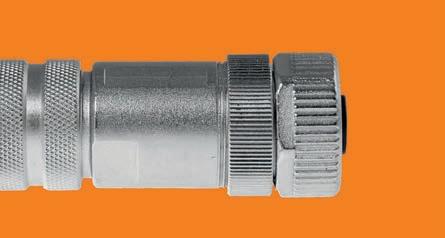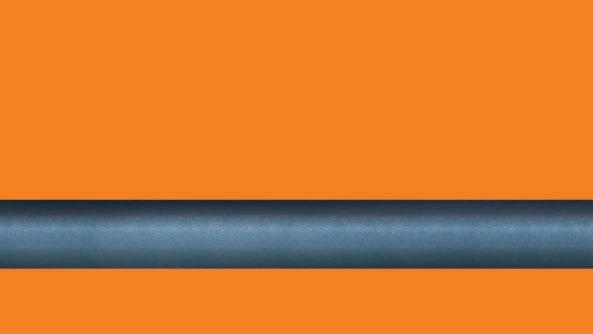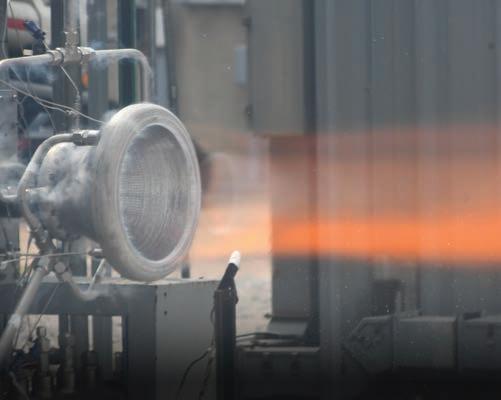
6 minute read
readycable® cable assemblies


MILLIONS OF FEET IN STOCK
FLEXIBILITY FOR DYNAMIC APPLICATIONS
DESIGNED TO PREVENT CORKSCREWING
NO MINIMUM LENGTH REQUIREMENT
UL-VERIFIED GUARANTEE UP TO 36 MOS.
Meets 20+ manufacturer standards
• In stock & ships in as little as 24 hours
• No minimum order quantity required
• Wide range for lowest cost solution

• Entire assembly from single source
• Online tool to estimate cable lifetime


• Available fully installed within e-chain®

2023 Nserc Prize Honors Canadian Godfather Of Ai
The Natural Sciences and Engineering Research Council of Canada (NSERC) announced the recipients of this year’s NSERC Prizes. In total, twenty-two of Canada’s world-leading scientists and engineers, and six of their industry partners, received awards recognizing their work.
For Canada’s most prestigious science prize, Yoshua Bengio was awarded the Gerhard Herzberg Canada Gold Medal for Science and Engineering. Known as one of the godfathers of artificial intelligence, the Université de Montréal professor’s research led to breakthroughs in AI, while his leadership has influenced the development and application of AI globally.

Cathleen Crudden has been awarded this year’s John C. Polanyi Award in recognition of her breakthrough discovery in organic-on-metal coatings and overall contr ibution to the advancement of the field of chemistry. She is now collaborating with international partners to advance the use of these nanomaterials in cancer treatments, as next-generation coatings for semiconductor chips, to improve pipeline protection and to protect the surface of offshore wind turbines from corrosion.
Widely recognized exper t in the field of water engineering, Peter Vanrolleghem has been awarded the NSERC Donna Strickland Prize for Societal Impact of Natural Sciences and Engineering Research. The Université Laval professor has focused on developing and implementing advanced methods for modeling water quality in integrated urban wastewater systems, such as sewage and stormwater systems. His research has also resulted in practical applications and helped to improve the health of humans and the environment.
Heather Sheardown and the C20/20 team at McMaster University, the University of Toronto and the University of Waterloo have been awarded this year’s Brockhouse Canada Prize for Interdisciplinary Research in Science and Engineering. C20/20 has become an internationally recognized innovation centre for its ophthalmic therapies and devices, and for the wide-ranging training and mentoring of highly qualified personnel, whose impact has improved the lives of millions of Canadians suffering from ocular diseases and vision impairment.
NSERC also announced six recipients of the Arthur B. McDonald Fellowships, which recognize early-stage academic researcher s in the natural sciences and engineering, and celebrated outstanding collaborations that are models of effective partnerships between organizations and colleges or universities by awarding four Synergy Awards for Innovation. www.nserc-crsng.gc.ca
GENERAL FUSION, TRIUMF PARTNER TO TEST FUSION REACTOR PROTOTYPE
General Fusion’s plasma injector, the PI3, is the world’s largest and a critical component of the company’s Magnetized Target Fusion prototype reactor, the LM26.
General Fusion, the B.C.-based developer of commercial fusion energy, and Canada’s particle accelerator centre, TRIUMF, announced that they have signed a Memorandum of Understanding. Under the terms of the agreement, the two organizations say they will develop diagnostics designed to prove the performance of the company’s Magnetized Target Fusion (MTF) demonstration prototype reactor, called the Lawson Machine 26 (LM26). Specifically, TRIUMF and General Fusion say they will collaborate on neutron diagnostics and an ion temperature diagnostic for the LM26 reactor prototype. These diagnostics will verify that LM26 achieves fusion conditions, reaching temperatures of more than 100 million deg rees Celsius. Additionally, the company says the data will inform the costs and size of General Fusion’s commercial scale demonstration planned for a site at the U.K. Atomic Energy Agency’s Culham Campus.
The LM26, being built at its Richmond, B.C. headquarters, will integrate the company’s operational plasma injector with a simplified compression system. According to the company, the plan is for the LM26 prototype to reach fusion conditions in 2025 and set a path for scientific breakeven equivalent in 2026.

Ultimately, the company’s goal is to bring fusion energy to the electricity grid by the early to mid-2030s.
“British Columbia is a hub for technology innovation and General Fusion is pleased to advance our transformative LM26 machine with an organization that is both local and has international renown,” said Greg Twinney, CEO, General Fusion. “We look forward to drawing from TRIUMF’s deep well of knowledge and abilities to help drive toward our goal to achieve scientific breakeven by 2026.” https://generalfusion.com www.triumf.ca


H55 Breaks Ground On Canadian Hq In Quebec

Swiss electric propulsion firm, H55, began construction of its Canadian headquarters at Saint-Hubert Airport in the greater Montreal area in October. According to the company, it specializes in modular, lightweight and certifiable propulsion and energy solutions primarily for the aviation industry.
Part of the company’s global expansion, the facility will house the headquarters for H55’s Canadian subsidiary (H55 inc) as well as a production line, with initial battery pack production to commence in 2024. Funding for the facility includes federal government support through the Aerospace Regional Recovery Initiative (ARRI) and Canada Economic Development (DEC), while discussions for support from the Quebec government is in process.
When complete, the facility, H55 says, will provide product development, customization and customer support to its existing customer s in Canada, including Pratt & Whitney Canada (P&WC), CAE and Harbour Air. In 2022, Pratt & Whitney Canada, for example, announced that H55 would supply the batter y systems for P&WC’s regional hybrid-electric flight demonstrator program. Similarly, CAE announced last year that it had selected H55 to convert two-thirds of its Piper Archer training fleet to electric propulsion and to develop an electric conversion kit for sale to third parties.
“The aeronautics industry has a long history in Quebec and is a source of pride among Quebecers,” said Minister of Transport and Quebec Lieutenant, Pablo Rodriguez, at the ground breaking ceremony. “By investing to boost scientific innovation in the aeronautics sector, we are ensuring we can continue to cultivate the expertise we have acquired in Quebec, while also supporting the development of technologies that will help us accelerate our transition to green energy.” https://h55.ch of which is the manufacturing time savings. Nozzles built using conventional methods may have upwards of 1000 parts that have to be assembled and joined, whereas a 3D printed nozzle is built as a single piece. Additive manufacturing also allows for the inclusion of small and complex internal cooling channels into the RAMFIRE nozzle to prevent melting.
NASA’S 3D-PRINTED ROCKET NOZZLE PASSES HOT-FIRE TESTS

NASA announced it has built and performed multiple hot-fire tests on two nozzles, additively manufactured from a novel aluminum alloy, as part of its RAMFIRE project. Short for Reactive Additive Manufacturing for the Fourth Industrial Revolution, the RAMFIRE project seeks to 3D print rocket engines that are as strong but lighter than conventional engines, to enable deep space exploration as part of the space agency’s Moon to Mars program.
While aluminum is prized for its light weight and strength, it hasn’t previously been a good choice to make rocket engines, NASA says, due to its intolerance to extreme heat and tendency to crack when welded or 3D printed.
However, engineers from NASA’s Marshall Space Flight Center worked with Erie, Colorado’s Elementum 3D, to develop A6061-RAM2, a weldable, heat resistant aluminum variant, as well as, a powered form that could be used for 3D printing. The space agency then turned to commercial partner, RPM Innovations (RPMI), to additively manufacture the RAMFIRE project nozzles using the Laser Powder Directed Energy Deposition (LP-DED) printing process.
According to NASA, 3D printing the rocket nozzle is critical for a number of reason, not least www.nasa.org www.elementum3d.com www.rpm-innovations.com
Composed of a novel aluminum alloy, NASA’s 3D printed RAMFIRE nozzle passed a series of hot fire tests at the space agency’s Marshall Space Flight Center.
In testing, the 3D printed A6061-RAM2 nozzles have outperformed expectations. During the hot-fire tests, carried out this past summer at Marshall’s East Test Area, the two RAMFIRE nozzles successfully accumulated 22 starts and nearly 10 minutes of run time, the space agency says. Completed using both liquid oxygen / liquid hydrogen and liquid oxygen / liquid methane fuels, the tests also put the nozzles under pressures in excess of 825 pounds per square inch (psi), more than anticipated.
“After putting the nozzle through the paces of a demanding hot-fire test series, we’ve demonstrated the nozzle can survive the ther mal, structural and pressure loads for a lunar lander scale engine,” said Paul Gradl, RAMFIRE principal investigator at NASA Mar shall.
With the testing successfully completed, NASA says it is currently sharing the data and process details with academics and commercial stakeholders, including aerospace companies that are evaluating the A6061-RAM2 alloy and the LP-DED process to make components for satellites and other applications.
De Havilland Canada Partners With Universal Avionics

De Havilland Canada announced it has selected Universal Avionics as lead supplier of integrated flight decks for De Havilland Canada’s CL-215T and CL-415 firefighting aircraft. The flight deck system will support aerial firefighting operations with flight display, flight management, data communication and connectivity systems. https://dehavilland.com www.universalavionics.com
According to De Havilland, the flight deck upgrade will increase the functionality and effectiveness of its firefighting aircraft family, which will now feature Universal Avionics’ navigational instruments for enhanced safety and improved situational awareness.
In addition, De Havilland Canada announced the purchase of Mid-Canada Mod Center (MC2) and Avionics Design Services (ADS), which have worked on Universal Avionics installations, upgrades and modifications for decades.The company says the acquisition will add to De Havilland Canada’s expertise in avionics upgrade services for commercial and business aircraft.
They are also a Transport Canada Design Approval Organization that develops Supplemental Type Certificates and Repair Design Approvals for MC2 and ADS and its customers. De Havilland Canada says MC2 and ADS’ leadership team will remain in place, and the company will operate as a subsidiary of De Havilland Canada.







